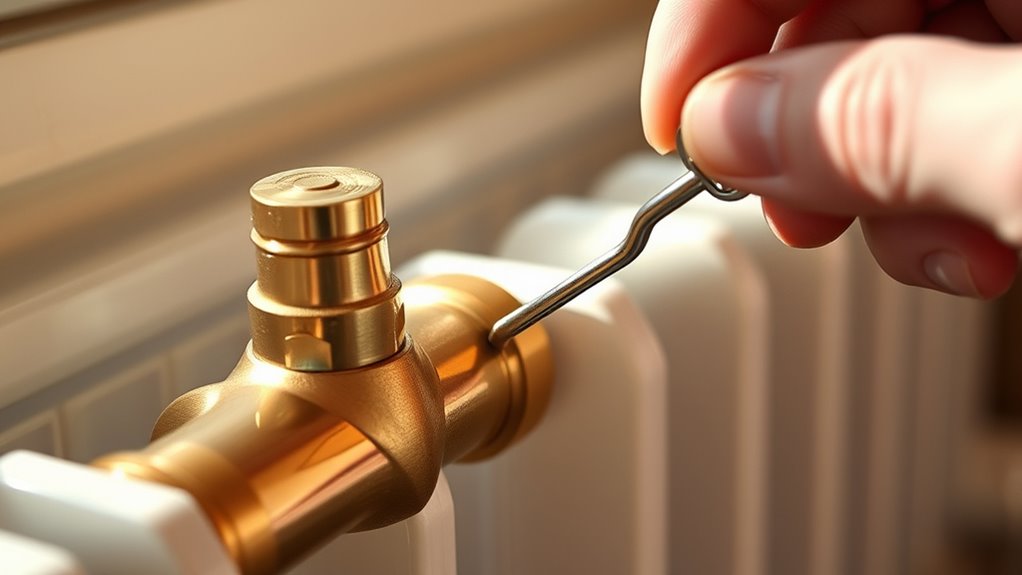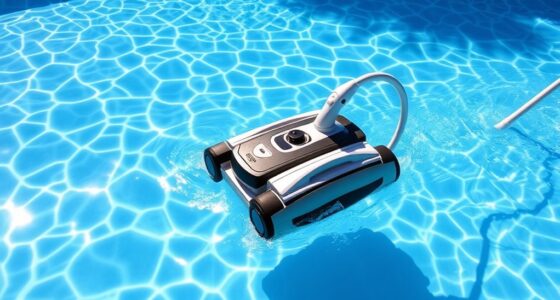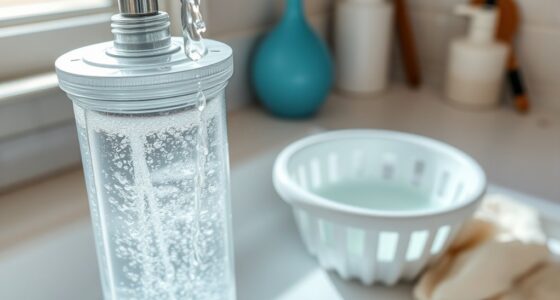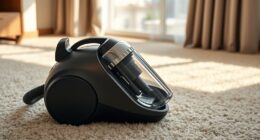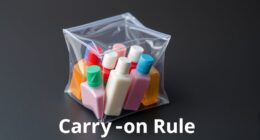To bleed your radiators, first turn off your heating and let the system cool. Locate the bleed valve at the top of each radiator, using a radiator key or flat-head screwdriver to open it slowly. Listen for a hissing sound as air escapes, and wait until water begins to trickle out steadily. Then, close the valve securely. Regularly bleeding your radiators helps prevent cold spots and keeps your system running smoothly—continue for more helpful tips.
Key Takeaways
- Turn off the heating and let the radiator cool before bleeding.
- Locate the bleed valve at the top of the radiator and prepare a cloth or container.
- Use a radiator key or flat-head screwdriver to slowly open the valve until air escapes with a hissing sound.
- Wait for water to trickle steadily, then close the valve tightly to prevent leaks.
- Regularly bleed your radiators, especially before colder months, to prevent air build-up and ensure efficient heating.

If your radiators aren’t heating up properly, trapped air could be be the culprit. Over time, air can get trapped inside your radiator, creating pockets that prevent hot water from circulating efficiently. This not only leads to uneven heating but also hampers your overall heating efficiency. To keep your system running smoothly, understanding how to bleed radiators is essential. Regular radiator maintenance, including bleeding, helps ensure your heating system operates at its best, saving you money and keeping your home comfortably warm. Proper radiator maintenance also extends the lifespan of your heating system and maintains its efficiency.
Before you start, make sure your central heating is turned off and has cooled down. This prevents hot water from splashing and reduces the risk of injury. Locate the bleed valve—usually a small, square or slotted valve at the top of the radiator. You’ll need a radiator key or a flat-head screwdriver to open it. Keep a cloth or small container nearby to catch any water that may escape during the process. Once ready, gently insert the key or screwdriver into the valve and turn it counter-clockwise. You should hear a faint hissing sound as air escapes. When water begins to trickle out steadily, close the valve by turning it clockwise. This process releases the trapped air, allowing hot water to flow freely and improving your radiator’s heating efficiency.
Bleeding your radiators should be part of routine radiator maintenance, especially before the colder months when you rely heavily on your heating system. Not doing so can cause your radiators to become less effective, leading to cold spots and increased energy consumption. Regular bleeding ensures that air doesn’t build up and that hot water reaches every corner of your radiators. It’s a simple task that can considerably improve your system’s performance and extend its lifespan.
If you notice that one or more radiators are still cold at the top or bottom after bleeding, it might indicate other issues such as sludge buildup or a problem with your pump. In such cases, additional maintenance or professional help may be necessary. However, bleeding is a straightforward first step that often resolves minor air blockages and restores ideal heating efficiency.
Frequently Asked Questions
How Often Should I Bleed My Radiators?
You should bleed your radiators once a year or whenever you notice cold spots or uneven heating. Regular bleeding frequency is part of radiator maintenance that keeps your heating system efficient. If you see trapped air causing noise or poor warmth, it’s time to bleed again. Don’t wait too long, as air buildup can reduce heating effectiveness and increase energy costs. Keep up with radiator maintenance to guarantee peak performance year-round.
Can I Bleed Radiators During Hot Weather?
You can bleed radiators during hot weather, but it’s like trying to fix a leaky faucet in a rainstorm—better saved for cooler days. Bleeding is a key part of radiator maintenance that boosts heating efficiency, so doing it when your system isn’t running at full blast helps avoid unnecessary air circulation. Just make certain your heating system is off, and you’ll keep your radiators in top shape without any fuss.
What Tools Are Needed to Bleed Radiators?
To bleed your radiators, you’ll need a radiator key or a flat-head screwdriver to open the bleeding valve. Make sure you have a cloth or small container to catch any water that escapes. Check the radiator pressure before and after bleeding, as it may drop. Turn off your heating, insert the tool into the bleeding valve, and slowly release air until water flows steadily.
Is It Safe to Bleed Radiators Myself?
Think of radiator maintenance as tending a delicate garden; with care, you can do it yourself safely. Bleeding radiators is generally safe if you follow proper DIY safety precautions, such as turning off the heating and wearing gloves. Use the right tools and handle the bleed valve gently. When done correctly, you keep your heating system running smoothly without risking injury or damage, making it a manageable part of home upkeep.
What Signs Indicate My Radiators Need Bleeding?
You’ll notice your radiators need bleeding if they make banging or gurgling noises, which are caused by trapped air bubbles. Additionally, if your radiator heats unevenly or stays cold at the top while the bottom is hot, it’s a clear sign that air is blocking proper circulation. Addressing these signs by bleeding your radiators will help restore efficient heating and eliminate annoying noises.
Conclusion
Now that you know how to bleed your radiators, you can keep your heating system running smoothly and save on energy bills. Just like a trusty steed needs regular tending, your radiators require a bit of upkeep to stay efficient. Don’t wait for winter’s chill—think of it as your personal “time machine” to a cozy home. Keep these steps in mind, and you’ll be a radiator hero in no time!
